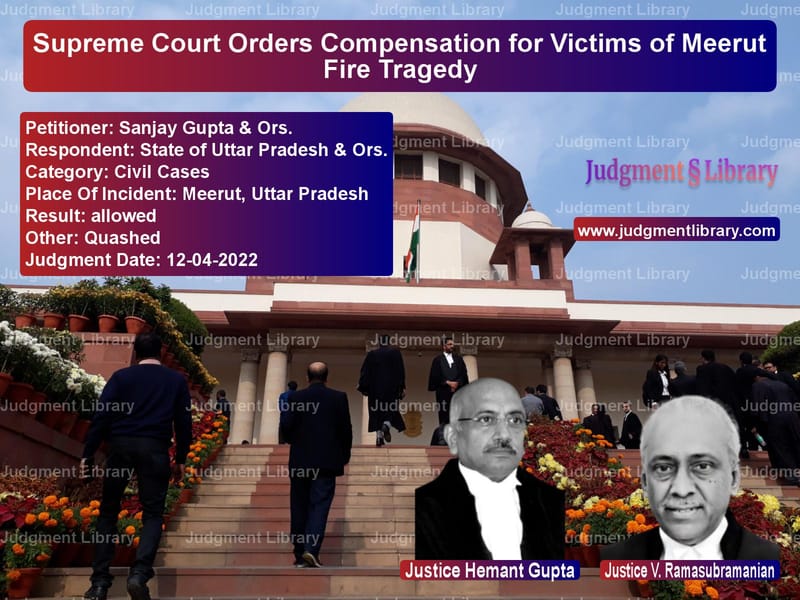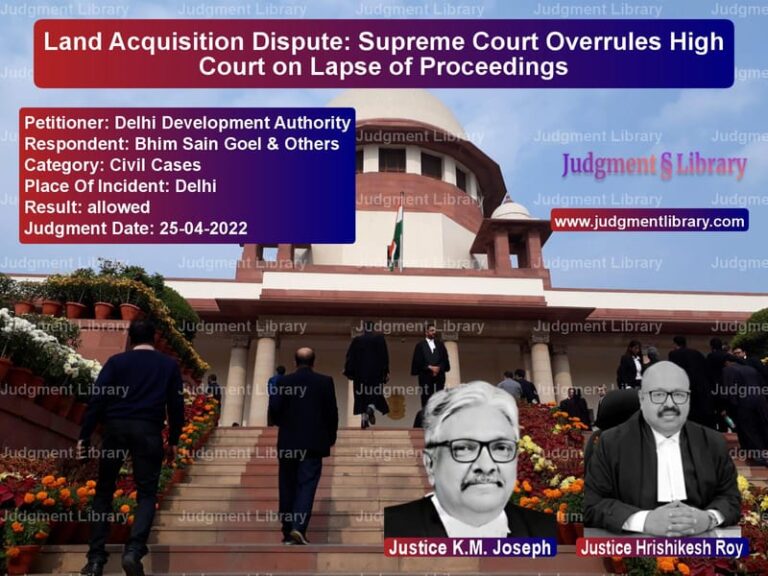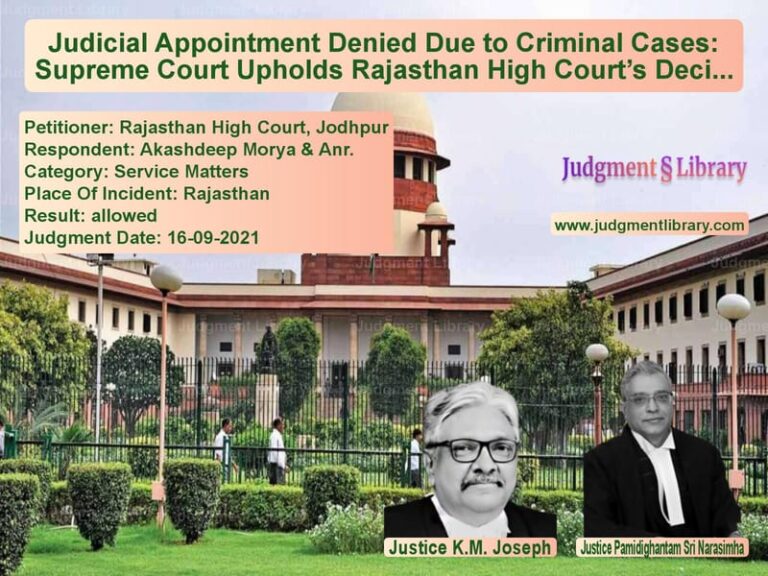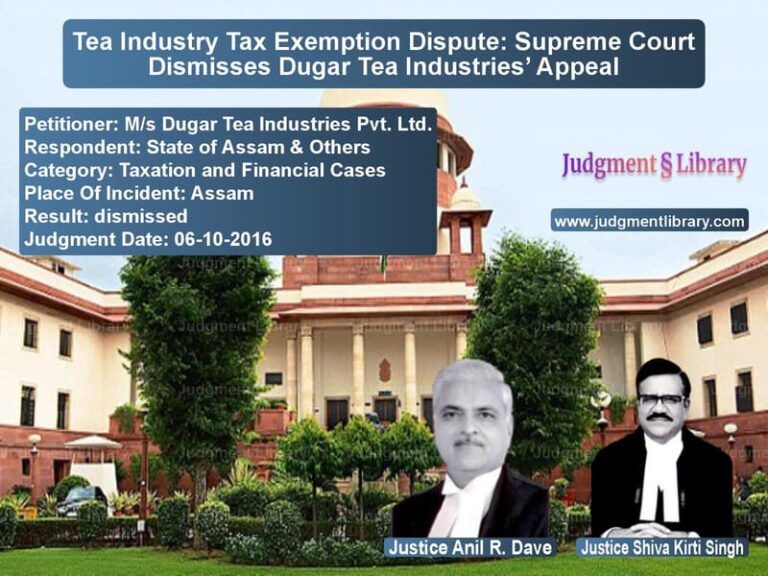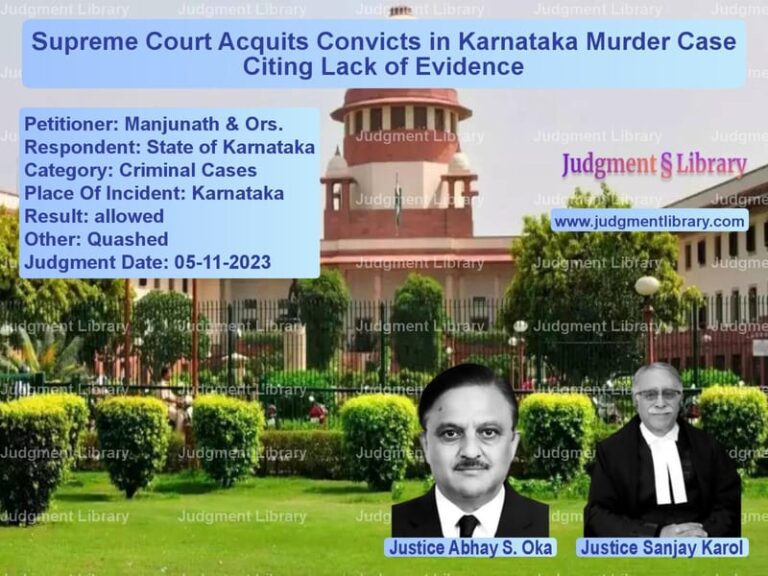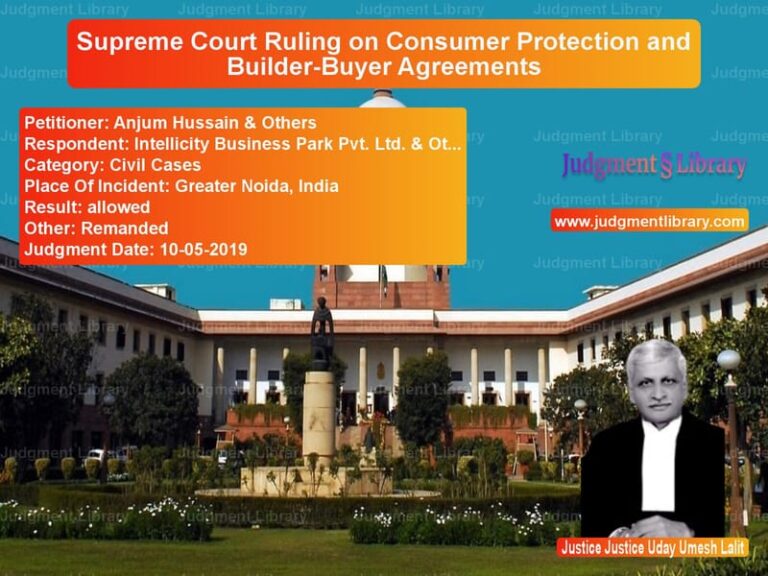Supreme Court Orders Compensation for Victims of Meerut Fire Tragedy
The case of Sanjay Gupta & Ors. vs. State of Uttar Pradesh & Ors. was a significant ruling by the Supreme Court of India concerning the tragic fire that occurred on April 10, 2006, during the India Brand Consumer Show at Victoria Park, Meerut. This disaster resulted in the deaths of 65 people and injuries to more than 161 others. The Supreme Court’s decision addressed key issues of liability, negligence, and the right to compensation under Article 21 of the Constitution.
Background of the Case
The fire at the exhibition was caused by gross negligence in fire safety measures and a lack of adherence to statutory requirements. The event was organized by Mrinal Events and Expositions (Respondents 10-12), who failed to ensure proper fire prevention measures despite handling a public event with thousands of attendees.
Key developments in the case:
- 2006: The Uttar Pradesh government appointed Justice O.P. Garg to investigate the incident.
- 2014: The Supreme Court set aside the initial inquiry report and appointed Justice S.B. Sinha as a one-man commission to reinvestigate the case.
- 2015: The commission submitted a detailed report, identifying lapses by the organizers and state authorities.
- 2022: The Supreme Court issued its final judgment, holding the organizers primarily responsible and directing compensation to the victims.
Petitioners’ Arguments
The petitioners, representing the victims, argued:
“The organizers willfully neglected fire safety protocols, misrepresented information to authorities, and failed to obtain necessary permissions, leading to an avoidable catastrophe.”
Key points raised:
- The organizers falsely claimed to have fire safety measures in place.
- They failed to obtain proper permissions under Section 54 of the Electricity Act, 2003 and Rule 47A of the Indian Electricity Rules, 1956.
- The fire spread due to short circuits and the use of substandard materials.
- The police and local administration did not properly assess the fire hazards.
Respondents’ Arguments
The State of Uttar Pradesh contended:
“The victims should file civil suits instead of seeking relief under Article 32. The writ petition is not maintainable against private organizers.”
Counterarguments:
- The government had already initiated disciplinary action against responsible officials.
- The organizers had full control over the event and should bear primary liability.
- The state was willing to compensate victims, but liability needed proper apportionment.
Supreme Court’s Observations
The Supreme Court bench, led by Justices Hemant Gupta and V. Ramasubramanian, ruled in favor of the victims, holding both the organizers and the state accountable. The court emphasized:
“The right to life under Article 21 includes protection from preventable disasters. The organizers’ negligence directly led to loss of life, making them primarily liable.”
Findings:
- The organizers had deliberately misled authorities to obtain permissions.
- There was clear evidence of lapses in fire safety compliance.
- The event should have undergone rigorous inspection under the U.P. Fire Prevention and Fire Safety Act, 2005.
- The state had failed in its duty to enforce safety regulations.
Legal Precedents Considered
The Supreme Court cited multiple landmark cases:
- Nilabati Behera vs. State of Orissa (1993): Established compensation as a remedy for violations of Article 21.
- M.C. Mehta vs. Union of India (1987): Upheld strict liability for hazardous activities.
- Uphaar Tragedy Case (2011): Highlighted the duty of organizers and authorities in public safety matters.
Final Ruling
The Supreme Court quashed the Uttar Pradesh High Court’s previous order and ruled:
- The organizers bear 60% liability, while the state is responsible for 40%.
- Compensation must be determined based on Motor Vehicles Act principles.
- The Allahabad High Court shall appoint a judicial officer to assess and distribute compensation.
Conclusion
This judgment reinforces the importance of public safety and accountability in mass gatherings. The Supreme Court’s decision ensures that victims receive compensation and serves as a precedent for stricter enforcement of fire safety laws across India.
Read also: https://judgmentlibrary.com/supreme-court-upholds-eviction-decree-in-rajasthan-rent-control-case/
Petitioner Name: Sanjay Gupta & Ors..Respondent Name: State of Uttar Pradesh & Ors..Judgment By: Justice Hemant Gupta, Justice V. Ramasubramanian.Place Of Incident: Meerut, Uttar Pradesh.Judgment Date: 12-04-2022.
Don’t miss out on the full details! Download the complete judgment in PDF format below and gain valuable insights instantly!
Download Judgment: sanjay-gupta-&-ors.-vs-state-of-uttar-prade-supreme-court-of-india-judgment-dated-12-04-2022.pdf
Directly Download Judgment: Directly download this Judgment
See all petitions in Damages and Compensation
See all petitions in Negligence Claims
See all petitions in Judgment by Hemant Gupta
See all petitions in Judgment by V. Ramasubramanian
See all petitions in allowed
See all petitions in Quashed
See all petitions in supreme court of India judgments April 2022
See all petitions in 2022 judgments
See all posts in Civil Cases Category
See all allowed petitions in Civil Cases Category
See all Dismissed petitions in Civil Cases Category
See all partially allowed petitions in Civil Cases Category

